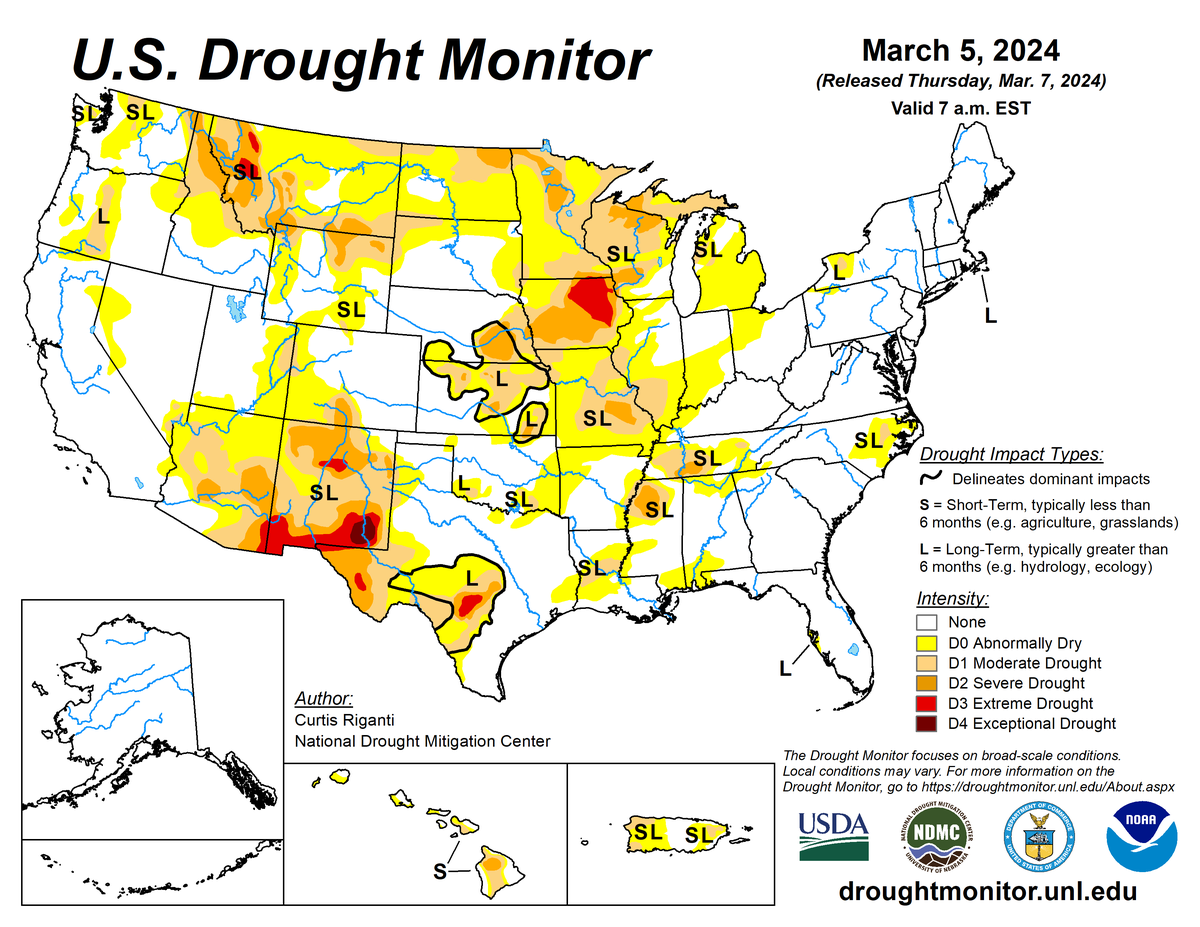
According to the March 5, 2024 U.S. Drought Monitor (USDM), moderate to exceptional drought covers 18.3% of the United States including Puerto Rico, an increase from last week’s 18.1%. The worst drought categories (extreme to exceptional drought) were about 1.3%, about the same as last week.
Several weather systems moved across the contiguous U.S. during this U.S. Drought Monitor week (February 28–March 5). Their fronts and surface lows tapped Pacific moisture to spread rain and snow across much of the West, while Gulf of Mexico and Atlantic moisture fed the systems in the East. The week ended up wetter than normal across most of the West and much of the Eastern Seaboard, as well as parts of the Great Lakes, central Gulf states, and far northern Plains. Most of the Great Plains to Ohio and Tennessee Valleys and parts of the Four Corners states were drier than normal. When averaged across the week, the upper-level circulation consisted of a low-pressure trough over the West and a high-pressure ridge along the East Coast. This pattern resulted in warmer-than-normal weekly temperatures east of the Rockies and cooler-than-normal temperatures across the West.
Heavy precipitation and improving snowpack conditions resulted in contraction of drought and abnormal dryness in parts of the West, while above-normal precipitation contracted drought or abnormal dryness in parts of the Great Lakes, Lower Mississippi Valley, Carolinas, Puerto Rico, and Hawaii.
Drought or abnormal dryness expanded or intensified in parts of the Great Plains and Midwest where short-term precipitation deficits increased, streams were low, conditions were windy, abnormally warm weather increased evapotranspiration, and soils continued to dry out. Northeasterly trade winds improved conditions on the windward side of the Hawaiian Islands, but they also resulted in degradation on the leeward side. Nationally, expansion exceeded contraction, so the nationwide moderate to exceptional drought area increased this week.
Abnormal dryness and drought are currently affecting over 79 million people across the United States including Puerto Rico—about 25.4% of the population.

The full U.S. Drought Monitor weekly update is available from Drought.gov.
In addition to Drought.gov, you can find further information on the current drought as well as on this week’s Drought Monitor update at the National Drought Mitigation Center
The most recent U.S. Drought Outlook is available from NOAA’s Climate Prediction Center and the U.S. Department of Agriculture provides information about the drought’s influence on crops and livestock
For additional drought information, follow #DroughtMonitor on Facebook and Twitter.



